Related Research Articles
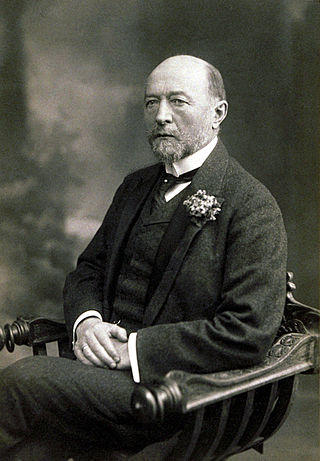
Emil von Behring, was a German physiologist who received the 1901 Nobel Prize in Physiology or Medicine, the first one awarded in that field, for his discovery of a diphtheria antitoxin. He was widely known as a "saviour of children", as diphtheria used to be a major cause of child death. His work with the disease, as well as tetanus, has come to bring him most of his fame and acknowledgment. He was honoured with Prussian nobility in 1901, henceforth being known by the surname "von Behring".
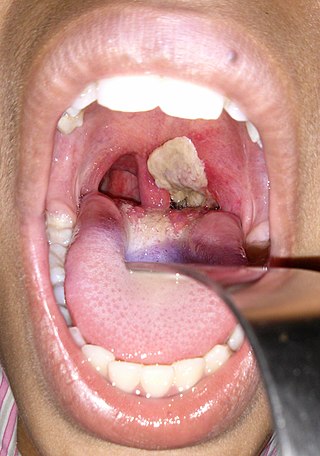
Diphtheria is an infection caused by the bacterium Corynebacterium diphtheriae. Most infections are asymptomatic or have a mild clinical course, but in some outbreaks, the mortality rate approaches 10%. Signs and symptoms may vary from mild to severe, and usually start two to five days after exposure. Symptoms often develop gradually, beginning with a sore throat and fever. In severe cases, a grey or white patch develops in the throat, which can block the airway, and create a barking cough similar to what is observed in croup. The neck may also swell, in part due to the enlargement of the facial lymph nodes. Diphtheria can also involve the skin, eyes, or genitals, and can cause complications, including myocarditis, inflammation of nerves, kidney problems, and bleeding problems due to low levels of platelets.
This is a timeline of the development of prophylactic human vaccines. Early vaccines may be listed by the first year of development or testing, but later entries usually show the year the vaccine finished trials and became available on the market. Although vaccines exist for the diseases listed below, only smallpox has been eliminated worldwide. The other vaccine-preventable illnesses continue to cause millions of deaths each year. Currently, polio and measles are the targets of active worldwide eradication campaigns.
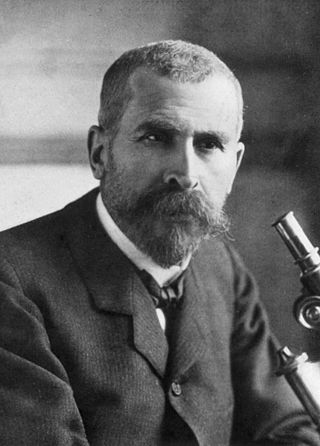
Pierre Paul Émile Roux FRS was a French physician, bacteriologist and immunologist. Roux was one of the closest collaborators of Louis Pasteur (1822–1895), a co-founder of the Pasteur Institute, and responsible for the institute's production of the anti-diphtheria serum, the first effective therapy for this disease. Additionally, he investigated cholera, chicken-cholera, rabies, and tuberculosis. Roux is regarded as a founder of the field of immunology.

Gunnar Kaasen was a Norwegian-born musher who delivered a cylinder containing 300,000 units of diphtheria antitoxin to Nome, Alaska, in 1925, as the last leg of a dog sled relay that saved the U.S. city from an epidemic.

Parke-Davis is a subsidiary of the pharmaceutical company Pfizer. Although Parke, Davis & Co. is no longer an independent corporation, it was once America's oldest and largest drug maker, and played an important role in medical history. In 1970 Parke-Davis was acquired by Warner–Lambert, which in turn was acquired by Pfizer in 2000.

Maurice Beddow Bayly was an English physician, anti-vivisection and anti-vaccination activist, and Theosophist, best known for his opposition to animal experimentation.
Cutter Laboratories was a family-owned pharmaceutical company located in Berkeley, California, founded by Edward Ahern Cutter in 1897. Cutter's early products included anthrax vaccine, hog cholera virus, and anti-hog cholera serum—and eventually a hog cholera vaccine. The hog cholera vaccine was the first tissue culture vaccine, human or veterinary, ever produced. The company expanded considerably during World War II as a consequence of government contracts for blood plasma and penicillin. After Edward Cutter's death, his three sons—Robert K. Cutter (president), Edward "Ted" A. Cutter Jr. (vice-president), and Frederick A. Cutter—ran the company. In the next generation Robert's son David followed his father as president of the company. The Bayer pharmaceutical company bought Cutter Laboratories in 1974.
Argyrol is the trade name for an antiseptic for mucous membranes which consists of compounded solutions of mild silver protein. Argyrol is synonymous with the chemical Mild Silver Protein (MSP) which is pharmaceutical grade for use in medicine and sterile processes. MSP is a molecule produced in the chemical industry in Europe, consisting of elemental silver conjugated along the helix of a denatured protein molecule derived from caseinate of strictly regulated certified livestock. Argyrol 10% is 20,000 ppm with particle sizing molecular range from <8 nm to average <14.3 nm. Argyrol is a local anti-infective most familiar for both ophthalmic and upper respiratory disinfection. Widely publicized for its value to resolve gonorrhea infections, it was known to prevent gonorrheal blindness and other pathogenic bacterial and viral infections to the eyes of newborn infants. Albert C. Barnes developed and commercialized Argyrol as treatment and prevention technology.

The history of animal testing goes back to the writings of the Ancient Greeks in the 4th and 3rd centuries BCE, with Aristotle and Erasistratus one of the first documented to perform experiments on nonhuman animals. Galen, a physician in 2nd-century Rome, dissected pigs and goats, and is known as the "Father of Vivisection." Avenzoar, an Arabic physician in 12th-century Moorish Spain who also practiced dissection, introduced animal testing as an experimental method of testing surgical procedures before applying them to human patients. Although the exact purpose of the procedure was unclear, a Neolithic surgeon performed trepanation on a cow in 3400-3000 BCE. This is the earliest known surgery to have been performed on an animal, and it is possible that the procedure was done on a dead cow in order for the surgeon to practice their skills.
In immunology, passive immunity is the transfer of active humoral immunity of ready-made antibodies. Passive immunity can occur naturally, when maternal antibodies are transferred to the fetus through the placenta, and it can also be induced artificially, when high levels of antibodies specific to a pathogen or toxin are transferred to non-immune persons through blood products that contain antibodies, such as in immunoglobulin therapy or antiserum therapy. Passive immunization is used when there is a high risk of infection and insufficient time for the body to develop its own immune response, or to reduce the symptoms of ongoing or immunosuppressive diseases. Passive immunization can be provided when people cannot synthesize antibodies, and when they have been exposed to a disease that they do not have immunity against.

Diphtheria vaccine is a toxoid vaccine against diphtheria, an illness caused by Corynebacterium diphtheriae. Its use has resulted in a more than 90% decrease in number of cases globally between 1980 and 2000. The first dose is recommended at six weeks of age with two additional doses four weeks apart, after which it is about 95% effective during childhood. Three further doses are recommended during childhood. It is unclear if further doses later in life are needed.
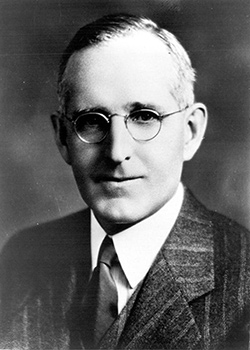
John Gerald "Gerry" FitzGerald was a Canadian physician and public health specialist who was instrumental in the control of diphtheria, first by producing and freely distributing antitoxin, and then in 1924 by using mass production to enable widespread use of the vaccine devised by Gaston Ramon.

Wyeth was a pharmaceutical company until it was purchased by Pfizer in 2009. The company was founded in Philadelphia, Pennsylvania, in 1860 as John Wyeth and Brother. Its headquarters moved to Collegeville, Pennsylvania, and Madison, New Jersey, before its headquarters were consolidated with Pfizer's in New York City after the 2009 merger.

Merck & Co., Inc. is an American multinational pharmaceutical company headquartered in Rahway, New Jersey, and is named for Merck Group, founded in Germany in 1668, of which it was once the American arm. The company does business as Merck Sharp & Dohme or MSD outside the United States and Canada. It is one of the largest pharmaceutical companies in the world, generally ranking in the global top five by revenue.
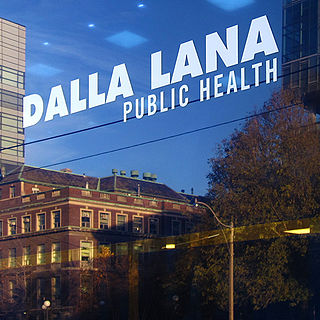
Dalla Lana School of Public Health is the school of public health at the University of Toronto. It was founded in 1927, and was home for 50 years to Connaught Laboratories, a manufacturer of vaccines, insulin, and many other pharmaceutical products. Having grown to be the largest cluster of public health scholars in Canada, the school was revitalized in 2008 with the support of a major gift from the Dalla Lana family.
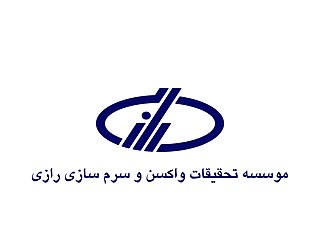
The Razi Vaccine and Serum Research Institute is an Iranian pharmaceutical and biological institute. It is located in the Hessarak district in Karaj, Iran. The institute was built as a national center with the purpose of countering epidemics in domestic animals during Reza Shah era. Further departments were installed, including those dedicated to human medicines. In modern years, the institute has focused primarily on nanomedicine and biotechnology.

The Department of Medical Microbiology, formerly known as the Department of Bacteriology or the Institute of Bacteriology, was a research department of the pharmaceutical company Schering AG.
CRM197 is a non-toxic mutant of diphtheria toxin, currently used as a carrier protein for polysaccharides and haptens to make them immunogenic. There is some dispute about the toxicity of CRM197, with evidence that it is toxic to yeast cells and some mammalian cell lines.

The Connaught Medical Research Laboratories was a non-commercial public health entity established by Dr. John G. FitzGerald in 1914 in Toronto to produce the diphtheria antitoxin. Contemporaneously, the institution was likened to the Pasteur Institutes in France and Belgium and the Lister Institute in London. It expanded significantly after the discovery of insulin at the University of Toronto in 1921, manufacturing and distributing insulin at cost in Canada and overseas. Its non-commercial mandate mediated commercial interests and kept the medication accessible. In the 1930s, methodological advances at Connaught updated the international standard for insulin production.
References
- 1 2 3 4 5 Galambos, Louis (Aug 13, 1997). Networks of Innovation: Vaccine Development at Merck, Sharp and Dohme, and Mulford, 1895-1995. Cambridge University Press.
- ↑ "H. K. Mulford dies," American Druggist 96, 1937, p. 112
- 1 2 3 O'Neill, Robert F. (27 Dec 1992). "Recalling The Heyday Of Pioneering Drug Firm The H. K. Mulford Co. Of Glenolden Produced A Breakthrough Diphtheria Antitoxin". philly.com. The Philadelphia Inquirer. Archived from the original on 2016-03-04. Retrieved 21 Oct 2019.
- ↑ "San Francisco Branch, H. K. Mulford Company". California State Journal of Medicine. 7 (4): 150. April 1909. PMC 1652892 . PMID 18734638.